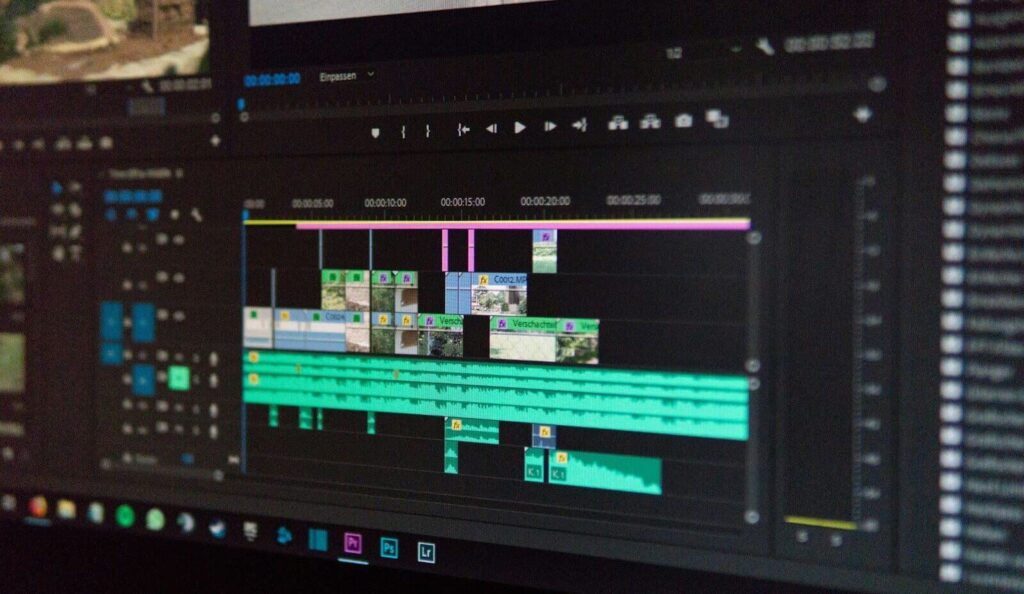In today’s digital era, video content has become the preferred medium for communication across various platforms. However, accessibility remains a large undertaking, particularly for people with listening to and language boundaries. To address this issue, innovative solutions like AI-powered teleprompters and integrated captions with video translators are revolutionizing the way videos are produced and consumed. In this blog, we will explore how these technologies are enhancing video accessibility and inclusivity and breaking language barriers.
AI-Powered Teleprompter: Revolutionizing Video Production
Traditionally, video production requires a script or a well-prepared speaker to deliver their message. However, an AI-powered teleprompter can be a game-changer for those who struggle with memorizing lines or lack the confidence to speak spontaneously. These teleprompters use artificial intelligence to display the script scrolling, either on a screen or through a reflection on a transparent surface. This allows the presenter to read their lines while maintaining eye contact with the camera, giving the impression of a natural and confident delivery. The AI algorithms adapt to the presenter’s pace, making adjustments in real-time and ensuring a seamless performance. With the assistance of AI-powered teleprompters, video production becomes more efficient, and individuals with speech difficulties or limited presentation experience can quickly produce professional-quality videos. The use of AI-powered teleprompters is not limited to video production. They can also be used in live displays, including speeches and lectures, to assist presenters live on the right track and confidently deliver their messages. The technology may be included in the current presentation software program or used as standalone software that runs on any tool.
Video Translator Online: Breaking Language Barriers
One of the most significant challenges in video accessibility is language barriers. Video translator services have emerged as a solution to this problem, allowing videos to be translated into multiple languages reaching a global audience. AI-powered video translators leverage machine learning algorithms to analyze and accurately translate the spoken or written content of videos. These sophisticated tools can handle subtleties in language, cultural contexts, and idiomatic expressions, ensuring that the translation is accurate and culturally appropriate. By breaking language barriers, video translators enable individuals from different linguistic backgrounds to access and understand video content, fostering cross-cultural communication and connections. Translate video is an essential aspect of these services, providing a seamless way to bridge linguistic gaps and make content universally accessible. Video translators are also used to create movie subtitles, making them extra reachable to humans with listening impairments. Subtitles can be created in multiple languages and displayed on the screen simultaneously, allowing viewers to choose their preferred language. This function is especially beneficial for international audiences who may not understand the original language of a video but need to enjoy it.

Captions Integration: Ensuring Inclusivity
Captions make video content accessible to individuals with hearing impairments or those watching videos in sound-sensitive environments. With technological advances, captions can now be integrated seamlessly into videos, enhancing the viewing experience for everybody. AI-powered transcription tools can automatically generate captions by analyzing the audio content and converting it into text. These equipment rely upon gadget studying algorithms to improve accuracy over time and adapt to distinctive accents and speech styles. Incorporating captions into films no longer simply fosters inclusivity but additionally expands the target audience’s reach. Additionally, captions bless folks who aren’t proficient in the spoken language, enhancing their know-how and interplay with the content. AI-powered transcription gear also can be used to generate subtitles for motion pictures, which can be particularly beneficial for content material creators who want to reach a global audience. Subtitles allow viewers to read along with the video in their native language, making it easier for them to understand what’s happening on screen. This is particularly important when creating educational or instructional content that may require viewers to follow along closely with the speaker.
Moreover, the mixture of captions exceeds mere accessibility; it fosters an inclusive environment where various audiences can completely engage with the content material fabric. For individuals with auditory processing disorders or learning disabilities, captions provide valuable support in comprehension. Furthermore, captions enable viewers to follow along without disturbance in noisy environments where audio may be compromised, such as public transportation or crowded spaces. This prevalent design technique now incorporates particular needs and enriches the overall viewing reveal for all users, reinforcing the importance of inclusivity in multimedia conversation.
In summary, the combination of AI-powered teleprompters and integrated captions reshapes how videos are accessed. AI-powered teleprompters are revolutionizing video production by aiding presenters in delivering their lines confidently and naturally. Meanwhile, integrated captions ensure inclusivity by making videos accessible to individuals with hearing impairments and those in noise-sensitive environments. Video translators break down language barriers, enabling a broader global audience to understand the content.These progressive solutions now not only enhance the accessibility of video content but also sell inclusivity and facilitate cross-cultural conversation. With technology evolving, we anticipate further enhancements in video accessibility, making videos an even more inclusive and influential form of communication.








 April 01, 2024
April 01, 2024






